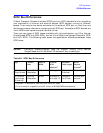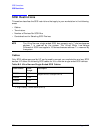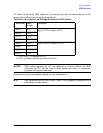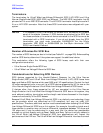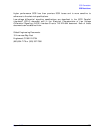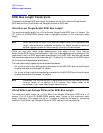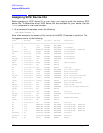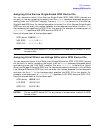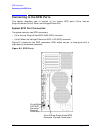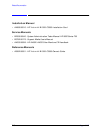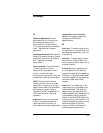
Appendix B 211
SCSI Connections
Assigning SCSI Device IDs
Assigning Ultra Narrow Single-Ended SCSI Device IDs
You can determine which Ultra Narrow Single-Ended SCSI (NSE SCSI) devices are
currently in use by reviewing the output from the ioscan command discussed above and
looking under the “H/W Path” heading. The entry 10/0/15/0 is the built-in Ultra Narrow
Single-Ended SCSI bus. For devices connected to the built-in Ultra Narrow Single-Ended
SCSI bus, such as disks, the number between the two decimals and after the third “/” in
the hardware path specifies the SCSI ID for that device. For example, a hardware path of
10/0/15/0.2.0 specifies a NSE SCSI device at SCSI ID 2.
Here is the break down of the hardware path:
SCSI device 10/0/15/0.2.0
NSE SCSI 10/0/15/0.2.0
SCSI ID 2 10/0/15/0.2.0
CAUTION
Do not use SCSI device ID 7 for any device. It is reserved for the built-in SCSI
bus controller.
Assigning Ultra2 Wide Low-Voltage Differential SCSI Device IDs
You can determine which Ultra2 Wide Low-Voltage Differential SCSI (LVD SCSI) devices
are currently in use by reviewing the output from the ioscan command discussed above
and looking under the “H/W Path” heading. The entry 10/0/15/1 is the built-in Ultra2
Wide Low-Voltage Differential SCSI bus. For devices connected to the built-in Ultra2 Wide
Low-Voltage Differential SCSI bus, such as disks, the number between the two decimals
and after the third “/” in the hardware path specifies the SCSI ID for that device. For
example, a hardware path of 10/0/15/1.5.0 specifies a LVD SCSI device at SCSI ID 5.
Here is the break down of the hardware path:
SCSI device 10/0/15/1.5.0
LVD SCSI 10/0/15/1.5.0
SCSI ID 5 10/0/15/1.5.0
CAUTION
Do not use SCSI device ID 7 for any device. It is reserved for the built-in SCSI
bus controller.



